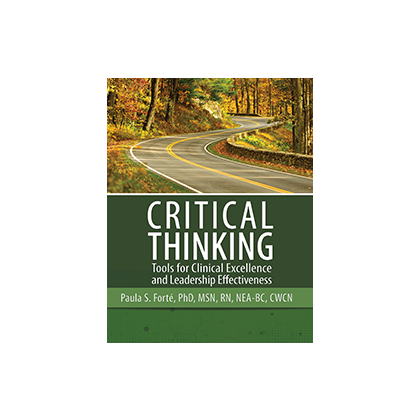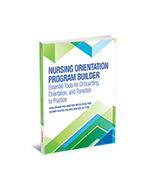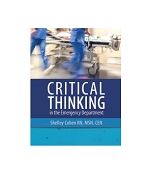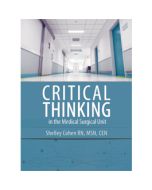Critical Thinking: Tools for Clinical Excellence and Leadership Effectiveness
*Digital product and event terms may vary.
Critical Thinking: Tools for Clinical Excellence and Leadership Effectiveness
Paula S. Forte, PhD, MSN, RN, NEA-BC, CWCN
Critical thinking remains a key issue for nurses and nurse managers. When asked what nurse managers struggle with the most, a lack of critical thinking consistently ranks near the top of the list. Critical Thinking: Tools for Clinical Excellence and Leadership Effectiveness provides the tools for nurses to help themselves and their staff improve their thinking and communication skills with both colleagues and patients.
This new book is geared toward mid-career nurses, newly promoted nurse managers, and nurses who are at a critical point in their career.
This book will help you:
- Help nurses improve their staff’s thought habits as well as their own
- Present evidence-based best practices for critical thinking
- Provide tools to increase critical thinking skills that will improve patient safety
- Provide foundations for leadership-oriented critical thinking skills
About the Author:
Paula S. Forté received her BSN from Dallas Baptist College (now, University) in 1975. She completed her MSN at Indiana University, Purdue University at Indianapolis (I.U.P.U.I.) in 1979 and her PhD in Adult Education and Organizational Development at Indiana University, Bloomington in 1984. She completed a post-doctoral fellowship in Nursing Administration Research with a focus in Nursing Informatics at the University of Iowa followed in 1998. She has worked in many roles including clinical service for both pediatrics and adult care, nursing administration and educational leadership, and currently coordinates the ANCC Magnet Recognition Program® journey for two hospitals in Minnesota.
Published: December 2016
Page Count: 148
Dimensions: 8.5 X 11
ISBN: 978-1-68308-172-2
Table of Contents
Part 1—Thinking and Being: The Core of Human Interaction
Chapter 1: How We Think and Learn to Become Nurses
Chapter 2: Thinking About Thinking—developing good thought habits
Chapter 3: Avoiding Autopilot—the scourge of thoughtlessness; the power of mindfulness
Chapter 4: What Guides Good Thinking?
Chapter 5: Creating High-Quality Questions—to ask yourself; to ask others
Part 2—Critical Thinking for Clinical Excellence
Chapter 6: Patient Safety—at the core of clinical competence
Chapter 7: Relationship Management—thoughtful encounters with others
Chapter 8: Clinical Protocols—conveying ideas to others
Chapter 9: Innovation for Excellence—putting evidence into practice
Part 3—Critical Thinking for Leadership Effectiveness
Chapter 11: Management vs. Leadership—paradox, possibility, and philosophy
Chapter 12: Trust and Transformation—foundations for leadership
Chapter 13: Creating a Climate for Conceivable Change—the leader as guide
Chapter 14: Monitor, Measure, Manage—the venerable trinity
 If for any reason you are not completely satisfied with an HCPro product, simply return it within 30 days of purchase and we will issue you a full refund.*
If for any reason you are not completely satisfied with an HCPro product, simply return it within 30 days of purchase and we will issue you a full refund.*


